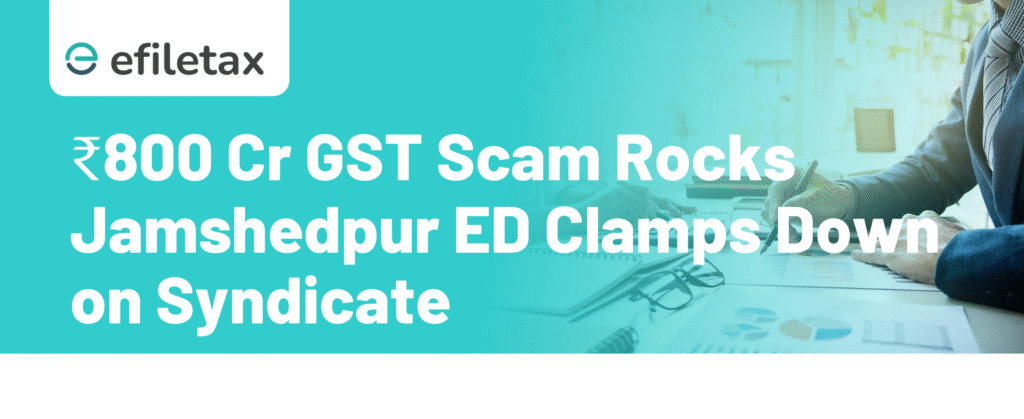
Intro
The ₹800 crore GST scam in Jamshedpur has once again brought fraudulent input tax credit (ITC) rackets into the spotlight. This massive GST evasion, uncovered by the Enforcement Directorate (ED), exposes a deep-rooted network of fake firms and illegal transactions aimed at siphoning off government revenue.
What Is the ₹800 Crore GST Scam About?
- Involves fake invoicing and fraudulent GST ITC claims
- 200+ shell companies reportedly set up to circulate fake bills
- Large-scale transactions shown without actual supply of goods
- Suspected involvement of businessmen from Jharkhand and other states
- ED suspects Hawala transactions and money laundering under PMLA
How the Scam Was Detected
- GST officials noticed unusually high ITC claims from low-profile businesses
- Cross-verification of GSTR-1 vs GSTR-3B data flagged discrepancies
- Data sharing between CBIC and ED triggered joint investigation
- Bank accounts linked to shell firms frozen
- Key accused found using Aadhaar and PAN of unsuspecting individuals
ED’s Legal Action Under PMLA
| Legal Provision | Description |
|---|---|
| Section 3 of PMLA | Deals with offence of money laundering |
| Section 50 of PMLA | Allows ED to summon and record statements |
| Attachment Powers | ED can attach properties linked to proceeds of crime |
| Provisional Attachment | Done under Section 5 of PMLA post preliminary evidence |
Expert Tip: If you suspect GST fraud in your business network, immediately reconcile supplier data via GSTR-2B and verify vendor GSTINs on the GST Portal.
GST Provisions Misused
| GST Section | Purpose | Scam Link |
|---|---|---|
| Section 16(2) | Conditions for availing ITC | Fake invoices without actual supply violate this |
| Section 132(1)(b) | Punishment for issuing fake invoices | Imprisonment up to 5 years |
| Rule 86A | Blocking of ITC | Used to stop use of fake credit |
| Section 69 | Power to arrest | ED and GST officials can arrest key accused |
Real Impact on Businesses
- Genuine taxpayers face stricter scrutiny
- Frequent ITC mismatches delay refunds
- Increased compliance cost for MSMEs
Efiletax View: How to Stay Compliant
- Regularly reconcile your GSTR-2B with purchase invoices
- Check vendor GST registration status before accepting input tax credit
- Keep invoice trail and delivery proof ready for all large transactions
- File returns on time to avoid red flags
- Avoid working with fly-by-night operators offering suspicious tax benefits
Internal Links
Explore our GST Compliance Checklist for 2025 to keep your filings error-free.
External Link
Refer to CBIC’s official fraud advisory for ongoing updates on fake invoice rackets.
FAQ Section
Q1: What is a GST scam?
A GST scam typically involves fraudulent input tax credit claims using fake invoices or non-existent businesses.
Q2: Can ED take action in GST fraud cases?
Yes, if the fraud involves proceeds of crime or money laundering, ED can act under the PMLA.
Q3: How can I verify if a vendor is genuine?
Use the GST Portal’s Search Taxpayer feature to verify GSTIN and registration details.
Summary
The ₹800 crore GST scam in Jamshedpur involves over 200 fake firms claiming bogus ITC. ED has launched a crackdown under the PMLA. Learn how it unfolded, the legal provisions involved, and how taxpayers can stay safe from such frauds.